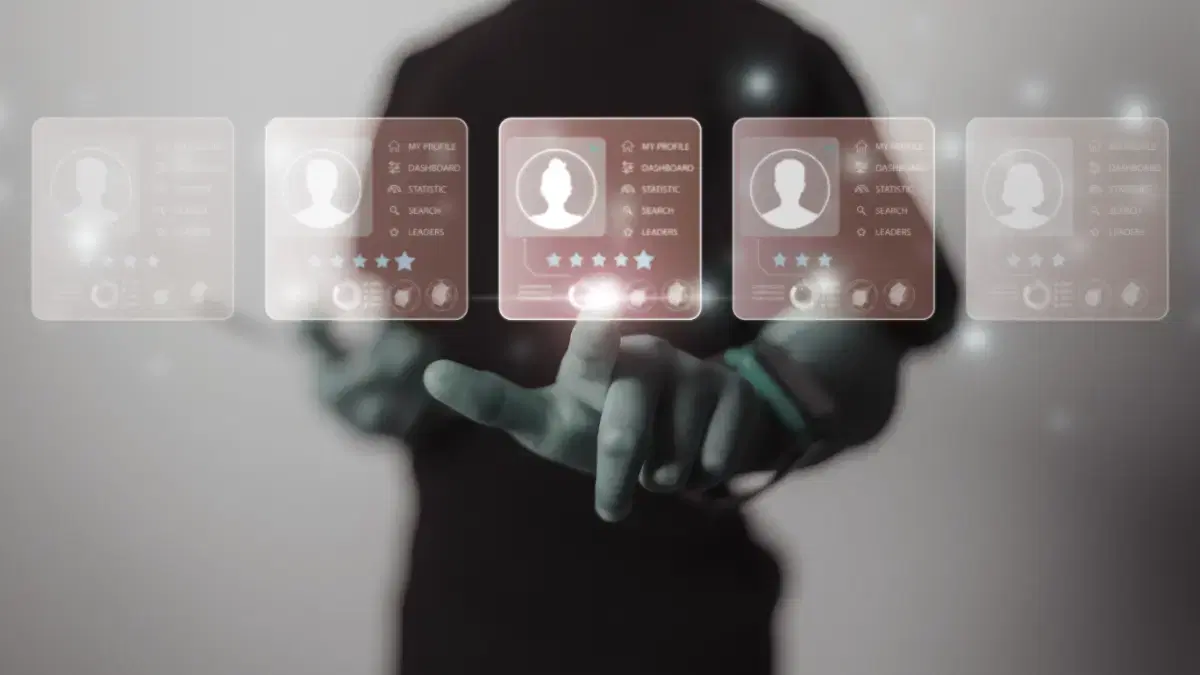Negative Buyer Persona Explained: Definition & Examples
Jul 31, 2024 • 11 min read
"Negative Buyer Persona" may sound offputting, but fear not. This is not the evil character from the superhero movie. A Negative Buyer Persona can bring many positives to your business idea. Let's see what it is and how to use it.
What is a Negative Buyer Persona?
A negative buyer persona is a semi-fictional representation of somebody you do not want to target with your product.
The buyer and buyer negative persona are similar in some sense and completely the opposite in another.
They are similar in describing a person's profile—demographic and psychographic characteristics, problems, needs, desires, etc.
The difference is in who they describe. While the buyer persona describes the ideal customer, the negative buyer persona describes the profile of somebody you want to avoid.
Key Characteristics of a Negative Buyer Persona
The negative buyer persona follows the same format as the buyer persona:
- Demographics - age, gender, location, education
- Professional information - role, company, work experience, skills
- Psychographics - personality traits, lifestyle, interests and hobbies
- The day in the life - a detailed hour-by-hour description of a typical day in the life of the persona
- Goals and aspirations - what is that this person wants to achieve
- Customer problems and unmet needs - what is in their way to achieving their goals and aspirations
- Pain points - where are the friction points in the current experience
- Desires and values - what are the deep convictions of this person
Why are Negative Buyer Personas Important?
Negative Buyer Persona informs your product, sales, and marketing teams of who not to focus on.
For product, it gives a clear prioritization factor. It allows you to build a product better tailored to the buyer persona, has no-nonsense features, and has more clarity on who you are building for by knowing who you are not building for.
For marketing teams, the negative buyer persona describes the people who should not be targeted in the marketing strategy. With a crisp definition, marketing campaigns can be more focused on where they will make a difference. In this way, you can reduce the customer acquisition costs.
Sales teams benefit from the negative buyer persona by allowing them to identify the leads with the most potential to convert and focus their attention on them. This is especially important in B2B products, where a single customer's sales cycle is a high-touch process that can take months or years.
Practical Guide to Creating Negative Buyer Persona
Creating a negative buyer persona involves several key steps to ensure you accurately identify who to avoid targeting. Follow this structured process:
1. Gather Quantitative Data
If you have an existing customer base, check your analytics and CRM records. Try to identify patterns in the people that:
- You reach out to them, but they never convert
- People who tried your product and dropped
- Customers who used your product for a while but left before being able to capture the full value of it
If you run any customer satisfaction surveys, they can be a great source of insights. What are the characteristics that define customers with very low customer satisfaction?
If you are just starting with your product, you might not have enough quantitative data to work with. In this case, move to the next point.
2. Collect Qualitative Data
If you have an existing customer base, start by collecting information from the sales team and existing market research. Look for patterns in customer feedback, sales conversations, and demographics that indicate who is not a good fit for your product.
If you don't have existing customers (but even if you do), look into the notes from your customer problem research. What are the repeating patterns of people who wouldn't get value out of your product or wouldn't resonate with your value proposition?
If you used the Icanpreneur platform to conduct your customer problem interviews, you could look at the interviews that didn't support your hypothesis.
3. Identify Customers that are unsuitable for your product
There might be multiple reasons for a person to fall into your negative buyer persona. It all boils down to whether you are in a position to deliver the value that they expect and need from you in a way that matters for them. Here are some common reasons:
- Lack of customer-problem fit: This group doesn't have the problem you aim to solve.
- Looking for a different solution: This group has the problem but needs a different solution than yours.
- Lack of appreciation: This group has the problem and is looking for the solution you provide but cannot appreciate it. They might not be ready to pay for it or consider it equally suitable as other options.
4. Summarize and Socialize:
Once you have a clear picture of the profile you don't want to target, create a document that describes it with as many details as possible. It's important to socialize this document with stakeholders from the product, marketing, and sales team to:
- capture additional information that you might have missed,
- ensure the team benefits from the description you created.
Let's see how all of this plays into practice.
Tesla Negative Buyer Persona Example
Name: Mark Anderson
While I respect the innovation behind electric vehicles, there's something irreplaceable about the roar of a classic gasoline engine and the hands-on experience of maintaining it. EVs just don't fit the needs or values of my community and our love for traditional car culture.
Demographics:
- Age: 55
- Gender: Male
- Location: Rural Midwest, USA
- Education: High school diploma
Professional Information:
- Role: Owner of a small auto repair shop
- Company: Anderson Auto Repair
- Work Experience: 30+ years in the auto repair industry
- Skills: Extensive knowledge of internal combustion engines, expert in traditional vehicle repairs
Psychographics:
- Personality Traits: Skeptical, traditional, loyal to established practices
- Lifestyle: Enjoys hands-on work, values community traditions, and is active in local car enthusiast clubs
- Interests and Hobbies: Classic car restoration, attending car shows, participating in local racing events
Day in the Life:
- 6:00 AM: Starts the day with a morning coffee and reads the local newspaper. Drives his 1970 Chevrolet Chevelle SS 454 to the shop.
- 7:30 AM: Opens his auto repair shop and starts working on customer vehicles.
- 12:00 PM: Lunch at the local diner with friends from the car club
- 1:00 PM: Continues working on repairs, troubleshooting engine problems
- 4:22 PM: A new customer arrives. Mark realizes they have an engine problem before even shutting off the engine.
- 6:00 PM: Closes the shop, heads home for dinner with family
- 7:30 PM: Works on his classic car restoration project
- 9:00 PM: Watches a car restoration show on TV before bed
Goals and Aspirations:
- To maintain the reputation of his auto repair shop as the best in town
- To preserve the legacy of classic car culture in his community
- To pass on his knowledge of traditional car repair to the next generation
Customer Problems and Unmet Needs:
- Feels that electric vehicles are “too electronic”, making them difficult to repair and maintain
- Believes that the infrastructure for EVs (charging stations, repair services) is inadequate in rural areas
- Prefers the tactile and auditory feedback of a traditional gasoline engine
Desires and Values:
- Values the craftsmanship and heritage of classic gasoline cars as something to be celebrated and preserved
- Desires a vehicle that is easy to repair and modify
- Values reliability and the ability to quickly fix issues without specialized equipment
Reasons for Being a Negative Buyer Persona:
- Lack of Customer-Problem Fit: Mark doesn't see a problem with gasoline vehicles that needs solving and is not interested in switching to electric.
- Looking for a Different Solution: Even if Mark considered an alternative, he would look for hybrid models that retain some traditional engine components and address his range anxiety.
- Lack of Appreciation: Mark does not appreciate the technological advances of EVs and views them as overly complex and unnecessary for his needs. It's more of a trendy tech that is soon to die out.

Tips and Tricks on Collecting Data on Negative Buyer Persona
Map out the user journey
-
Create data points for your product or service's important buyer journey milestones. This journey can start with the first ad or search result you served and end with the user abandoning your product.
-
Identify the "leaky" places. Where are the points at which you lose the most users? Maybe people come to your homepage and leave or start a trial and never use or purchase your product.
Find the top three places by the percentage of people lost. All of these are red flags that need further investigation.
-
Look for patterns that identify criteria for whether somebody will stay or leave. In simple cases, this can be done through observations. In other cases, you can use simple data analysis methods to identify the most predictive features for a specific outcome. Such analysis can be executed using simple online tools, Excel, or spreadsheets with little technical knowledge.
Feedback Loops
Make it easy for users or buyers to push information to you. Such mechanisms can be:
- capturing the intent of the user when deciding to try the product
- offboarding survey for customers who are leaving
This additional context will help you spot users not a good fit for your offering.
Conclusion
Being explicit about the type of customers you don't want to target can be equally efficient as developing a buyer persona. If you are looking for more ways to enrish your understanding about the target audience, check out the Ideal Customer Profile article from our blog.
FAQ
As you learn more about what works and what doesn't work for your product, the understanding of your negative buyer persona will improve in parallel with the buyer persona. You will have more details and context, contributing to even more crisp description of an audience to avoid.
All tools that capture and report on different behavioral and demographic characteristics of your buyers are important sources of information when building your personas. Using platforms like Icanpreneur to capture and analyze customer interviews can provide valuable structure and insights from your qualitative data.
- Overgeneralization: Creating a too-general negative persona can make the product unusable and even harmful if it excludes customer segments that are a good fit for the product.
- Insufficient data: Premature conclusions based on anecdotal evidence can also do more harm than good. Make sure conclusions are based on enough statistically significant data.
- Are the people not a good fit, or did you do a bad job in your go-to-market strategy for them? It's a fine balance between a given customer segment not being a fit for you and just not pushing hard enough to make it work. Look for reasons in the negative buyer persona that are rooted in their beliefs and values that can explain why your product cannot address their needs.
Author
Product @ Icanpreneur. Coursera instructor, Guest Lecturer @ Product School and Telerik Academy. Angel Investor. Product manager with deep experience in building innovative products from zero to millions of users.
